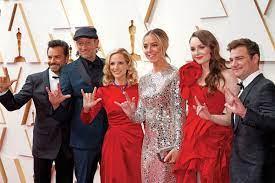In a world where diversity and inclusivity are becoming increasingly celebrated and acknowledged, the portrayal of individuals with disabilities in the media is an essential aspect of this movement. Among the various underrepresented groups, the Deaf community has long been fighting for proper representation in mainstream media and entertainment. Over time, there have been noticeable shifts in how Deaf individuals are depicted, showcasing a growing awareness and sensitivity to their stories and experiences.
Breaking the Silence: Historical Depictions
For much of the 20th century, the representation of Deaf individuals in media and entertainment was limited and often confined to stereotypical roles. Frequently, Deaf characters were depicted as isolated, pitiable figures, contributing to the marginalization and misconceptions surrounding the Deaf community. Such portrayals were based on misconceptions and lacked authentic representation of Deaf culture, language, and identity.
Winds of Change: Emergence of Authentic Representation
However, the landscape has transformed in recent years. There has been a noticeable shift in the industry towards more accurate and meaningful representations of Deaf characters and stories. This evolution is largely due to the advocacy and activism of the Deaf community, demanding more authentic and respectful portrayals.
One of the groundbreaking moments in this movement was the rise of Deaf actors and filmmakers taking the center stage. Talented individuals like Marlee Matlin, an Academy Award-winning actress for her role in "Children of a Lesser God," paved the way for other Deaf actors, proving that Deaf individuals can excel in the entertainment industry.
The success of films like "A Quiet Place" and TV shows like "This Close" further demonstrated the potential for compelling storytelling while incorporating Deaf characters authentically. These narratives not only feature Deaf characters but also highlight the richness of Deaf culture and sign language, offering audiences a more profound understanding and appreciation for the Deaf experience.
Shaping Perceptions: Impact and Importance
Authentic representation of Deaf individuals in media and entertainment is crucial for several reasons. Firstly, it helps break stereotypes and misconceptions, presenting Deaf individuals as multifaceted characters with their own unique stories and experiences. This, in turn, fosters empathy and understanding among audiences.
Moreover, the inclusion of Deaf characters allows for greater diversity on screen, reflecting the real world and enriching the storytelling landscape. By accurately depicting Deaf culture and sign language, it promotes linguistic and cultural awareness, encouraging the acceptance and celebration of differences.
The Journey Ahead: Embracing Diversity
While progress has been made, there is still much ground to cover. The Deaf community continues to advocate for more opportunities for Deaf actors, directors, and writers, both in front of and behind the camera. Additionally, it is essential for creators and industry leaders to collaborate directly with the Deaf community to ensure authentic and respectful portrayals.
In conclusion, the journey towards authentic representation of Deaf individuals in media and entertainment is an ongoing and vital process. It's a journey that not only impacts the Deaf community but also shapes the way society perceives and embraces diversity as a whole. As we move forward, let's strive for a world where Deaf individuals are not just seen but are heard, understood, and celebrated for their unique contributions to the rich tapestry of humanity.
image source:https://leader.pubs.asha.org/do/10.1044/leader.AEA.27092022.aud-dhh-media.16/full/

